A farm is not complete without proper fencing to keep animals in or out of designated areas. In our case, the property had not been used as a homestead in a very long time. As a matter of fact, the house had set empty for over 3 years before we bought it. Not one stitch of fencing or garden space existed on the entire 25 acres.
METAL POSTS & WELDED WIRE
Last summer we focused on creating a large primary garden complete with fencing. Growing lots of produce required us to keep the animals out; namely our dogs, deer, free ranging ducks & chickens.
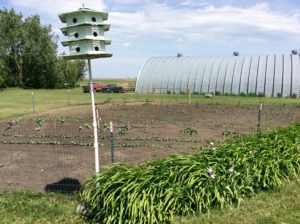
Having just moved in, it was a rushed job with metal stakes pounded into the ground by hand. By this I mean we used a heavy sledge hammer and not a post pounder. Due to safety and practicality issues this is not a method I would suggest. Tubular post pounders are inexpensive and functionally more friendly to tender fingers.
Welded wire fencing was installed to secure the perimeter of the large garden space. The resulting fence was sturdy, however after a year’s time the slack became very apparent. Using metal posts for the corners just wasn’t stable enough to keep everything in place. Eventually, this area will be augmented with treated timber corner posts and the fence will be tightened.
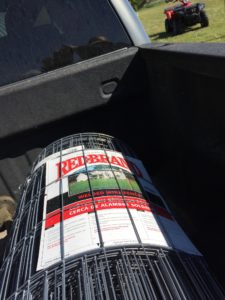
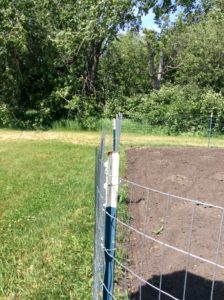
WOOD & METAL POSTS WITH WELDED WIRE
New gardens opened this year have boundaries designed as a direct result of the flaws in our first fence project. We decided to use cemented timber corner posts in combination with metal posts. The same welded wire was added to the this area with more focus on tension. The stretching was done by hand as the garden was small, therefore the fencing was easy to handle.
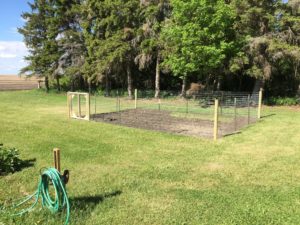
To complete the space a gate was made and installed by husband and son. The existing asparagus plot and newly opened ground creates a nice safe location for future perennials. Everything will now be secure enough that ducks and chickens can’t dig up what we plant.
WOODEN POSTS & WELDED WIRE
Our final fence for spring 2017 was the corn garden, aka “my husband’s baby”. He went over and above on this garden in an effort to keep out deer. His final plan resulted in wooden posts cemented into the ground. In all honesty, I started feeling a bit jealous because the main garden fence was no where near this grand.
In this plot, a make shift fence stretcher was rigged up by using 2×4’s screwed together. By “sandwiching” the fencing, these boards were pulled with the 4-wheeler via a chain and wench. The main objective was to pull the welded wire fencing tight enough there would be very little slack.
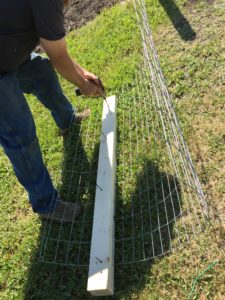
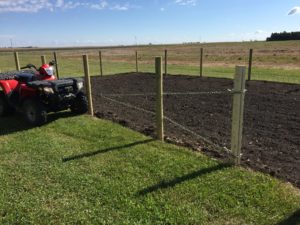

Fencing staples were used to secure everything to the wooden posts. They held tightly and kept the fence-line true and looking crisp.
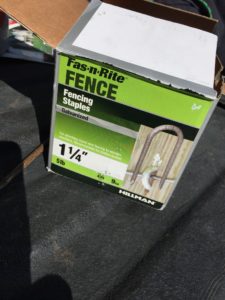
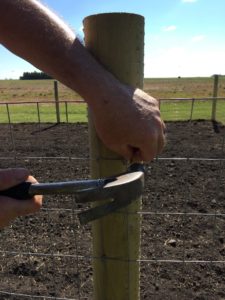
The garden space turned out great! Needless to say, my husband was over-the-moon happy with the results. It was a stark difference from the flaccid fencing found in the initial main garden we completed the year prior. Overall, the wooden posts are a bit of an overkill but long term it should hold up well.

Next year we plan on fencing yet another small garden space adjacent to the corn garden. For now it is planted with potatoes which the ducks and chickens haven’t bothered. With some soil amendments it will be a prime spot for future vines. Watermelon, cantaloupe, cucumbers or even pumpkins should do well in this location. I hope to keep these space hogs out of my main garden to make room for other vegetables.
As first-time homestead owners and complete novices at fencing, I think we did well. It seems like almost everything we do out here on the farm is a process. A long, sometimes frustrating process. We’ve learned a lot through our triumphs and our failures and there will certainly be many more.
For more on our adventures in first-time farm ownership visit Dirt On My Plate
#lifeon25acres










